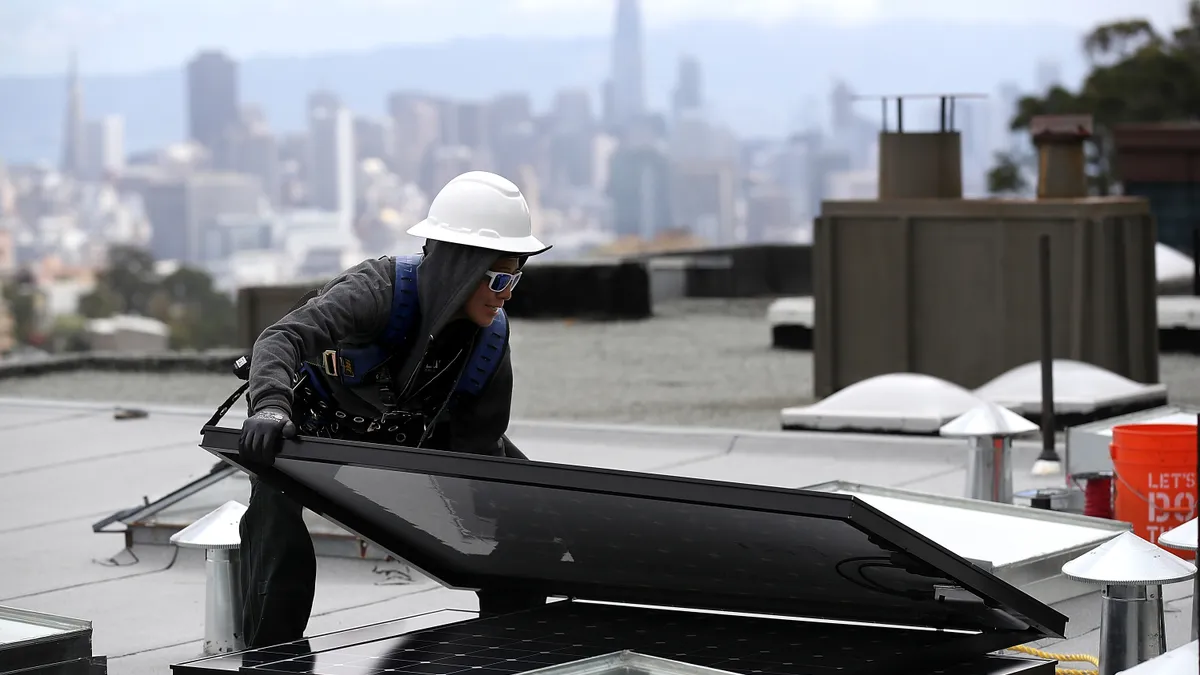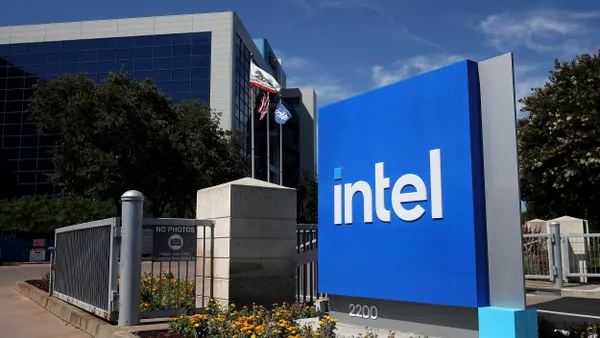Dive Brief:
- The solar energy industry will need to more than triple its workforce by 2030 to meet the Solar Energy Industries Association’s solar generation goal, which will require training many workers who have little to no solar experience, said Will White, a solar applications specialist at Fluke.
- White, who previously provided curriculum and training for Solar Energy International, said in an interview that most of the people coming into the industry are receiving on-the-job training, which “varies pretty significantly from company to company.”
- SEIA is working on developing a set of solar and energy storage industry standards, including standards for training, which would “go a long way” toward providing industry-wide consistency, “something we’re definitely lacking at this point,” White said.
Dive Insight:
SEIA received approval in July from the American National Standards Institute to develop a set of voluntary consensus standards for the solar industry including consumer protection, recycling, and supply chain traceability as well as training for installation, operations and maintenance, and health and safety.
“It's always good [for installers to] know, for instance, why are you plugging these things in together? What does it actually do?” White said. “It leads to people understanding when something is wrong, which leads to better quality on the back end — something that has been an issue in the industry for sure.”
White said that proper formal training for solar workers leads them to have a more holistic view of the process, which leads to lower operations and maintenance costs.
Worker demand is high across the renewable energy industry as projects in development have skyrocketed in the year since the Inflation Reduction Act passed. Many solar manufacturers and installers are expanding their operations in order to take advantage of this boom, and need to expand their labor force accordingly.
In the Interstate Renewable Energy Council’s 2022 National Solar Jobs Census, 44% of solar industry employers reported that it was “very difficult” to find qualified applicants, the highest percentage the census has ever recorded.
This level of demand means there are plenty of opportunities for workers who want to leave jobs in low-skilled labor or the service industry and move to a role that offers “more of a career path,” White said.
However, that means the “bar to get in is really low,” he said, with many employers focusing on soft skills like punctuality and willingness to learn instead of directly applicable experience — making good on-the-job training key to the overall success of the industry.
White has seen some companies offer in-house apprenticeship programs where four days a week are spent on the job and one day a week spent in the classroom, while other companies offer much more hands-off training.
However, companies and nonprofits like Solar Energy International, HeatSpring and the Midwest Renewable Energy Association have offered solar workforce training programs and curriculum for years, White said, while community colleges, trade schools, and unions like the International Brotherhood of Electrical Workers are increasingly offering solar training.
The IRA requires a percentage of labor on certain projects be completed by registered apprentices in order to qualify for tax credits, but there may not be enough registered apprentices on the market to meet labor demands. Bernice Diaz, a labor and employment attorney with Sheppard, Mullin, Richter & Hampton, said during an industry conference in February that the IRA “created a surge of demand” for apprentices but “did little to address” the shortage.
White called apprenticeship requirements a “double-edged sword,” due in part to the current lack of a federal apprenticeship designation for solar installers.
The occupation of solar installer is “not currently approved for use in a Registered Apprenticeship Program,” according to the Department of Labor’s website. The roles of solar technician, designer, and engineer are also not currently approved for use.
“That makes it challenging in terms of, okay, well, what [occupation] do you register them as?” White said. “We're working through that now – right now it’s being set up at the state level.”












